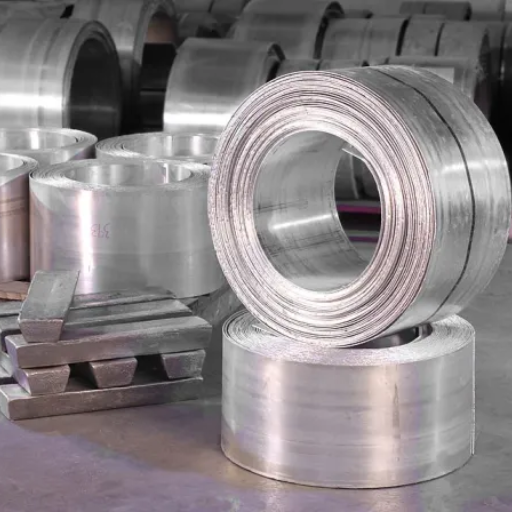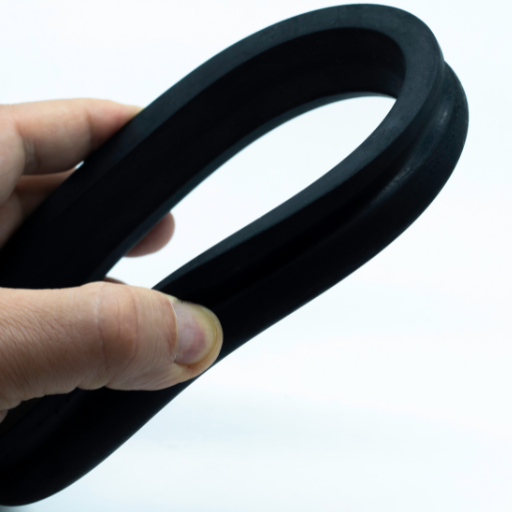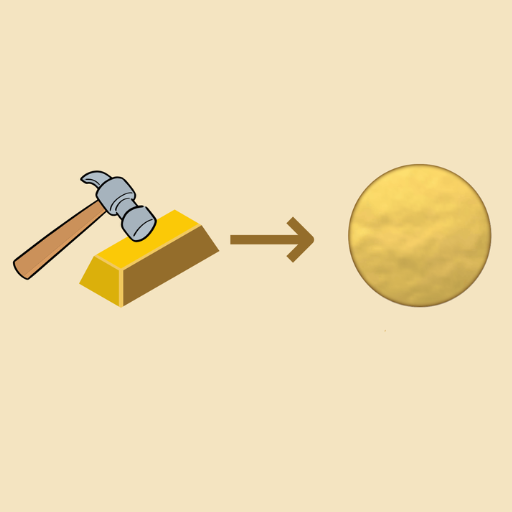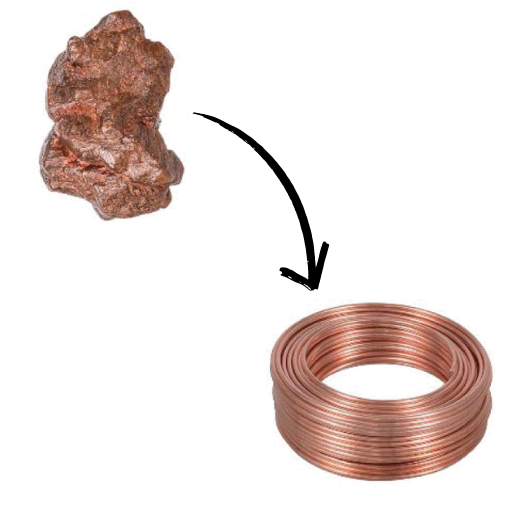Knowing the basic properties of metals is important in materials science and engineering. Ductility and malleability are two of the most significant features that can describe how metals respond to different stresses. When a metal can be drawn into a wire, it is said to be ductile, while malleability means ease with which a metal may be hammered or rolled into thin sheets (United States Department of Education 1). These attributes are vital not only for the selection of materials in diverse applications but also during production process and design of goods. In this blog post, I will discuss exhaustively ductility and malleability as well as their importance, causes and practical use in different industries. If you are an experienced engineer, a student learning material science or just someone who likes getting fascinated by metals; this article will give you insights on these important characteristics.
What is ductility?

Image source: https://pediaa.com/
The ductility of materials, especially metals, is a physical property that measures their ability to experience significant plastic deformation before breaking or rupturing. In simpler words, this means how easily it gets drawn into a wire without breaking. Copper, aluminum and steel are examples of ductile materials that exhibit large elongation when subjected to tensile stress thus they are ideal for applications requiring flexibility and resilience. The malleability of metal is influenced by factors such as temperature, alloy composition and grain structure; hence malleability is one of the most considered properties in selecting engineering materials.
Understanding ductility is the ability to deform
Ductility is the ability of a material to deform when subjected to tensile stress. For this reason, it is important for materials that are anticipated to be stretched, bent or twisted significantly without breaking. Such materials include copper, aluminum and some steels which can be drawn into wires for example by stretching them in order to give them other shapes like those of wires and thus they are precious in industrial applications (Bellows, 2004). Ductility depends on various factors including temperature which as a rule increases ductility at higher levels and has effects on the microstructure of the material such as its grain size or phases contained within itself. It is therefore necessary to comprehend ductility and optimize it for different materials so as to guarantee efficiency, reliability, safety and functionality of products made from them especially in automotive industry.
Examples of ductile material
A metal’s ability to undergo significant plastic deformation before rupture is what makes it ductile. Here are a few common examples.
- Copper: It possesses great electrical and thermal conductivities, which make copper highly malleable to thin wires. It is applied extensively in electrical wiring, plumbing and manufacturing of electronic components.
- Aluminum: This lightweight metal has both high malleability and resistance to corrosion. Therefore, aluminum can be drawn into wires and sheets, thus making it useful for manufacturing automotive items, aerospace parts as well as packaging materials.
- Steel: Ductility is one of the characteristics associated with different types of steel such as stainless steel or low-carbon steel. Because of their strength and flexibility properties, these metals can be shaped into various forms hence they have been widely used in building construction, infrastructure development and manufacture of household appliances.
Through understanding these examples, appropriate materials can be chosen for various engineering and industrial applications that will ensure both product performance and extend its life span.
The significance of high ductility in metals
There are various reasons why high ductility in metals is essential specifically in engineering and industrial applications. Initially, malleable metals can absorb a lot of energy prior to rupture which is necessary for structures and components that are subjected to dynamic or impact loads. This makes the material safer and more long-lasting so as to prevent catastrophic failures in buildings, bridges, or vehicles. Secondly, malleability implies that a metal can be easily deformed under stress without cracking making it possible to use them for more intricate manufacturing processes with greater precision. Making it suitable for use in creating wires from metals by means of drawing press them into sheets, form complex shapes among others required by the automotive industry, electronic industry but not limited to aerospace industry. Lastly, good deformability and ductility improves performance under varying temperatures thereby preserving structural integrity and functionality across different environments. In summary therefore this means that the ductile nature of metals is key in delivering products that are both dependable and adaptable.
What defines malleability?

It is the characteristic of the metals that make them susceptible to deformation under compression, like hammering or rolling. The importance of this attribute lies in the fact that metal can be made into thinner sheets without necessarily breaking and these thin sheets are very essential for sheet metal fabrication processes. If a material exhibits high malleability it means it can undergo extensive deformation without structural failure, thus making it useful for manufacturing and construction industries.
Explaining malleability is the ability to form into thin sheets
Malleability is the term used to describe a metal’s ability to withstand compressive stress and be made into thin sheets without breaking apart. This can be obtained by way of hammering or rolling that enables the shaping of the metal. Highly malleable metals like gold, silver, and aluminum, are easy to shape and flatten hence making them appropriate for various industrial applications including sheet metal fabrication, minting coins and manufacturing foils. The fact that structural integrity is preserved during this deformation process serves as evidence that malleability is critical in manufacturing and construction industries.
The role of malleable metal in industry
In the sphere of various industries, metals that can be deformed into flat sheets without breaking are of great importance. Construction industry heavily relies on malleable metals like steel and aluminum for strong structural components and building materials. The automotive sector also uses these metals to make tailored car body panels and other precise shaped parts. Also in electronics, copper is a type of malleable metal that is crucial for wiring and production of electronic devices. Due to their adaptability and long-lasting aspect, they are necessary for manufacturing process as it enables production of numerous products with intricate patterns or designs.
Understanding the properties of malleability
Primarily, malleability is affected by the atomic structure of metals. The FCC or face centered cubic crystal structure in metals such as gold, silver and aluminum makes them highly malleable since they can be deformed extensively without fracture. This characteristic influences how metals can be worked on and used in different applications. Temperature is also important because majority of metals become more malleable at high temperatures. On the other hand, impurities can reduce malleability since they distort uniform atomic lattice arrangement. Basically, these factors interact to guide on how to improve manufacturing processes of metalworking and development of new materials with desirable properties.
How are ductility and malleability different?

When it comes to a material’s plasticity, ductility and malleability are the two sides of the same coin. The former is referred to as that property of a metal that allows it to be drawn into a wire without breaking; this emphasizes tensile stress while the latter refers to metals ability to be hammered or rolled into thin sheets with out breaking under compressive strain. In essence, one has much to do with stretching whereas the other concentrates on compression.
Comparing ductile and malleable metals
Ductile and malleable metals behave differently when subjected to various types of stress. Ductile metals such as copper, for example, can easily be stretched into wires because they possess high tensile strength and ability to elongate without snapping. This enables them serve as conductors in electrical wiring and cable manufacture. Conversely, gold is a soft metal that can be flattened by hammering or rolling without tearing so it is perfect for making jewellery and intricate metal works among other items. For instance, gold has both high ductility and malleability but which balances these properties determines its best applications in different industries.
Impact of compressive stress vs. tensile stress on metals
For metals, different types of strains will affect how they function and their structural strength.
If the material is subjected to compression stress, it contracts or becomes shorter. A metal may shorten as well as thicken under compressive stress and if the stress becomes higher than its compressive strength, it can cause buckling or fracturing. There are specific applications where high loads are supported by materials without significant deformation or failure such as in construction beams or columns.
On the other hand, tensile stress occurs when forces pull apart the material. Tensile-stressed metals get longer while their ability to do so without breaking is measured by tensile strength. In necking followed by fracture, tension greater than a metal’s tensile strength may occur. It therefore necessitates materials that stretch under certain circumstances like ropes, cables, and structural supports.
In conclusion , while compression strain shrinks metals; tension elongates them. When using them for various structural and industrial purposes, it is important to determine whether metals can sustain these stresses without collapse.
Why are ductility and malleability important in engineering?

Ductility and malleability are key properties in engineering, because they determine how materials respond to stress and deformation. Ductility is regarded as the ability of a material to undergo substantial plastic deformation prior to failure, thereby making it suitable for applications which involve bending, stretching or elongation without fracture. This property is important for components such as wires, cables and structural supports that must withstand tensile stress. Malleability, on the other hand, is simply how a material can be compressed and made into thin sheets without any cracking occurring. Therefore, these types of materials are perfectly suited for manufacturing processes like forging, rolling and pressing. Put together, these properties ensure that metals can be effectively shaped and employed in various structural; mechanical; industrial usages so as to enhance the durability and flexibility of engineering designs.
The role of these properties in metal’s design applications
The importance of metals’ ductility and malleability for design purposes in the field of metallurgy cannot be overstated. Some sources, such as Matmatch, Key to Metals, and Engineers Edge, suggest that ductile materials are essential when it comes to making wires out of metals or creating complex shapes using extrusion or rolling them into thin sheets without cracking. Such properties enable metal foils, cables, and automotive elements to withstand tensile stress which adds up on their lives.
According to AZoM and American Institute of Steel Construction (AISC), malleability is also crucial for metals as it guarantees that they can be compressed and reshaped into various forms without breaking apart. Malleable materials are used in industries like forging and stamping where metal products undergo processes of manufacturing that require complicated geometries. This implies at once that such items can abound with strength yet still serve different industrial applications according to the challenging norms set by contemporary engineering. In unison, these two terms yield a scope for innovation in metal work techniques thus ensuring their reliability for any specific uses.
Enhancing ductility is important for safety
Various engineering and industrial applications require the enhancement of ductility as a safety measure for materials to withstand tensile stress without breaking. According to Forbes, Increase in ductility makes it possible for structures to absorb energy and deform predictably during events such as earthquakes reducing catastrophic failure. Alchemer also underscores the indispensability of ductile materials in the aerospace and automotive industries where components must be able to handle numerous loads and stresses without losing their structural integrity. Similarly, a report by ResearchGate showed that improved ductility can make metal parts sturdier hence ensuring that they work well under tough and dynamic conditions. Therefore, focusing on increasing ductility can enable engineers to design more secure structures and components that are more durable against them.
What factors affect ductility and malleability?

The ductility and malleability of metals is influenced by a number of factors. The major ones are temperature, composition, grain size and heat treatment. Higher temperatures generally increase the flexibility of atomic structure thereby enhancing ductility and malleability. This can be improved or diminished through alteration of element composition such as alloying elements presence in the metal. For example, some metals like nickel or manganese may increase ductility when added. In small grain sizes offer greater performance through more grain boundaries obstructing crack propagation. Lastly, specific heat treatments can alter the microstructure of metals for better deformation ability under stress. With this knowledge and manipulation of these parameters, engineers can optimize metals for various challenging applications.
The influence of grain boundaries on a metal’s behavior
Mechanical properties of a metal are greatly influenced by grain boundaries. Those areas where crystals meet that have different orientations can either be beneficial or harmful to the metal’s behavior. To ASM International’s research, they hinder the movement of dislocations thereby increasing the metal’s hardness and strength. This is called grain boundary strengthening.
Furthermore, grain boundaries can also function as barriers against crack propagation enhancing the strength and resistance to fracture of metals, according to a article on ScienceDirect. Conversely, there are times when these locations may serve as point at which corrosion will begin as implanted impurities or segregated alloying elements are present said scientists from NACE International.
In conclusion, size and distribution processes, e.g., thermo-mechanical treatments can be used to optimize performance of metals for particular applications in terms of strength, toughness and durability.
How alloy compositions change these properties
Metal alloy compositions play an important part in determining the mechanical properties of the metals. The microstructure of each metal depends greatly on the presence of various alloying elements which can substantially affect its strength, hardness, ductility and toughness. In accordance with a Matmatch article, such elements as carbon, chromium and molybdenum can elevate hardness and tensile strength in the metal by producing hard compounds or precipitates inside the grain boundaries. The dislocation motion is impeded by these precipitates thus strengthening occurs through a similar mechanism like grain boundary strengthening.
Accordingly, a piece in AZoM states that nickel or vanadium addition improves metal’s toughness and fracture resistance. These two metals lead to modifications in microstructure that allow the material to absorb more energy before it cracks. For instance, austenite can be stabilized in steel using nickel thereby increasing ductility as well as toughness.
TWI Global explains that elements like silicon and phosphorus make metals more castable and machinable but increase their brittleness if they are not properly balanced. On the other hand, magnesium and titanium are included into aluminum alloys because these additions enhance their strength to weight ratios making them ideal for aerospace and automotive industries.
Overall, specific combination of alloy species could be adjusted to achieve desired properties so engineers would have increased flexibility in designing particular applications for metals through careful management of their compositions.
The effect of temperature on ductile metal and malleable metal
Influence of temperature is important in relation to ductility and malleability in metals. Increase in temperature leads to rise in atomic mobility hence improved ductility and malleability for metals generally. Elevated temperatures, on the other hand, decrease yield strength of ductile metals allowing more plastic deformation prior to fracture thus facilitating processes like rolling or drawing. However, at high temperatures malleable metals become more pliant so as to be shaped through forging and hammering.
Furthermore, AZoM suggests that higher temperatures reduce internal stresses as well as dislocation density within the metal’s crystal structure leading to smoother deformation. Also, according to TWI Global this dependence on temperature can be reversed because sometimes certain metals might be brittle at very low temperatures losing their ductile properties such as carbon steel.
Additionally, Matmatch says that precise management of temperature is critical in manufacturing and processing industries. Right heat treatment optimizes the metal’s ductility and malleability thereby improving its performance for specific applications. Hence, knowledge about how temperature influences these materials’ behavior should be a priority when working with ductile or malleable metals.
What are the common tests to measure ductility and malleability?

The tensile test and the bend test are most often done to determine ductility. The tensile test involves pulling a metal specimen until it breaks, with elongation and reduction of area being indicative measures for quantification of ductility. The bend test demonstrates how much deformation metal can take by bending it over a certain radius without cracking.
Compression test and hardness test are two common tests used to assess malleability. In many cases, the method of applying load up to deformation is in use when assessing a metal’s ability to withstand compressive forces without fracturing (compression test). On the other hand, hardness testing which encompasses Brinell or Rockwell tests determine resistance of metals towards surface indentation reflecting their malleability indirectly. These tests collectively ensure that a metal’s properties are well understood for its intended applications.
Understanding the tensile test for ductility
Tensile testing, otherwise known as tension testing is fundamental in understanding the ductility of a material. This entails clamping a piece of metal between two grips and gradually applying an axial load until it shears. It gives the amount at which material stretches before breaking. Key parameters obtained from this test include yield strength, ultimate tensile strength (UTS) and elongation at break. Elongation at break becomes vital for determining ductility because it reveals the level to which a substance can be plastically deformed under tensile stress. Materials selection and quality control processes crucially require data that comes out of tensile tests for metals so as to ensure that they meet specified standards for various applications in industry.
Methods to test malleability using the hammer test
A metal’s hammer test is simple in determining how malleable it is. The process of this testing involves hammering the metal sample repeatedly to see if it distorts without breaking. Hammer blows will make a very malleable metal flatten out or spread into thin sheets, or change its shape in any other way but without a sign of any cracks. However, when exposed to similar surroundings, less ductile materials may give away in pieces. In workshops and laboratories, this straightforward but efficient technique is commonly employed for assessing metals’ workability; it also gives instant and helpful understanding on how they behave while being subjected to mechanical loads.
Interpreting stress-strain curves
To interpret stress-strain curves, one must understand the correlation between stress and strain. This curve has several regions which are usually distinct:
- Proportional Limit: Hooke’s law is followed by the initial linear part of the curve where stress and strain are proportional. The slope of this region represents Young’s modulus.
- Elastic Limit: It is the point at which permanent deformation starts after the straight line section ends. Prior to this point, if you remove a load material will go back to its original shape.
- Yield Point: Marks elastic-plastic transition. If load is reduced there after, even though it may be removed entirely, the material will never return to normal state again. A slight horizontal segment on the curve usually indicates this zone.
- Ultimate Tensile Strength (UTS): This peak defines how much stress a material can take as it stretches or pulls apart before it starts to neck and eventually fracture.
- Fracture Point: Last breaking point of material when applied stress cannot be borne anymore by it completely collapses under.
Material engineers use such regions to learn different materials properties including elasticity, yield strength, tensile strength and ductility among others. These interpretations are important in determining appropriate materials for specific uses and assuring their dependability and safety while functioning under anticipated loading conditions.
Frequently Asked Questions (FAQs)
Q: What are malleability and ductility?
A: Malleability and ductility are properties of metals. Malleability refers to the ability of metals to be hammered or rolled into thin sheets, while ductility refers to the ability of a material to stretch under tensile stress without breaking. Ductility is a crucial property for materials that need to be stretched into wires or other elongated shapes.
Q: Why are malleability and ductility important in engineering materials?
A: Malleability and ductility are important in engineering materials because they determine how materials can be shaped, formed, and used in different applications. Ductility is a critical factor when selecting materials for projects that require metals to be drawn into wires or other specific shapes, while malleability is important for applications that need materials to be formed into thin sheets.
Q: Which metals are known for their high malleability and ductility?
A: Metals that are well-known for their high malleability and ductility include gold, silver, and copper. These metals can be easily shaped and stretched without breaking, making them extremely ductile and also malleable.
Q: How does temperature affect the ductility of a material?
A: Temperature can significantly affect the ductility of a material. Higher temperatures generally increase the ductility of metals, allowing atoms to slide past each other more easily. Conversely, lower temperatures may decrease ductility and make metals more prone to becoming brittle materials.
Q: Can ductility and malleability decrease due to certain factors?
A: Yes, factors such as low temperatures, impurities in the metal, or excessive work-hardening can lead to a decrease in ductility and malleability. For example, when metals are repeatedly bent or hammered, this can lead to work-hardening, which decreases their ability to stretch or be hammered without breaking.
Q: What is the difference between a ductile and a brittle material?
A: A ductile material can stretch or elongate under tensile stress without breaking, exhibiting significant plastic deformation before the point of fracture. In contrast, a brittle material tends to break or shatter without significant deformation when subjected to stress. Cast iron is an example of a brittle material, while metals like copper or gold are considered ductile.
Q: How does the atomic structure affect the malleability and ductility of metals?
A: The atomic structure of metals significantly influences their malleability and ductility. In metals with a high degree of metallic bonding, metal atoms can slide past each other more easily, which contributes to higher ductility and malleability. The presence of mobile electrons also assists in the deformation process, allowing metals to be shaped and stretched without breaking easily.
Q: Why is ductility important in materials used for construction?
A: Ductility is an important property for construction materials because it allows them to absorb significant stress and deform before failing. This property is essential for ensuring the reliability and integrity of structures, as materials with higher ductility can better withstand dynamic loads and environmental stressors without breaking.
Q: Can malleability and ductility be improved through metallurgical processes?
A: Yes, metallurgical processes such as annealing, alloying, and heat treatment can improve the malleability and ductility of metals. These processes adjust the atomic structure and composition of metals to enhance their ability to be shaped and stretched without breaking. For example, annealing can relieve internal stresses and restore ductility that may have been reduced through work-hardening.





